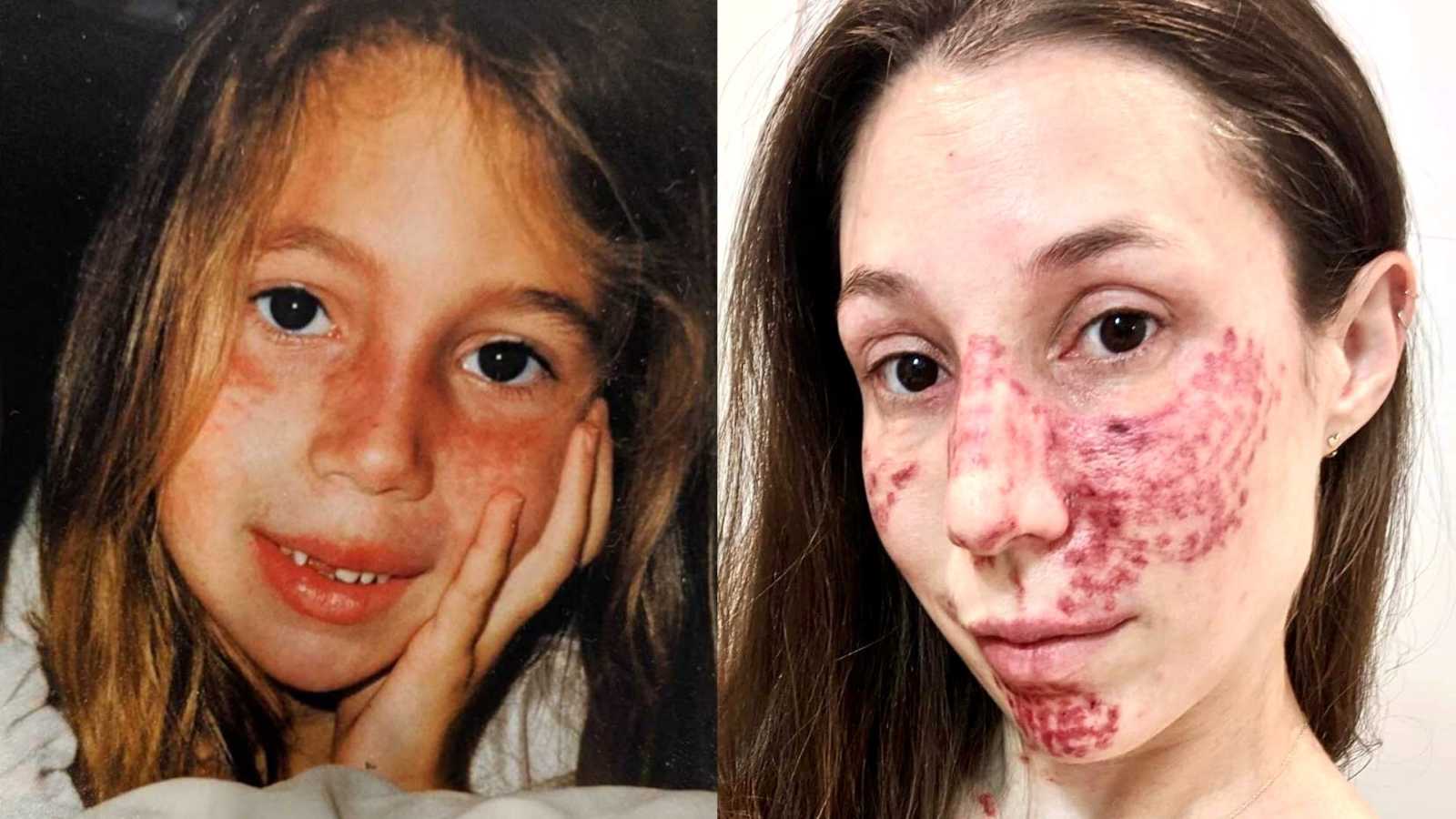“Growing up with a birthmark covering my whole face, I certainly have memories of rude comments, feelings of low self-esteem, and wondering if I could ever be considered beautiful. But my most significant memories are the pain and trauma of pulsed dye laser treatments to lighten my birthmark.
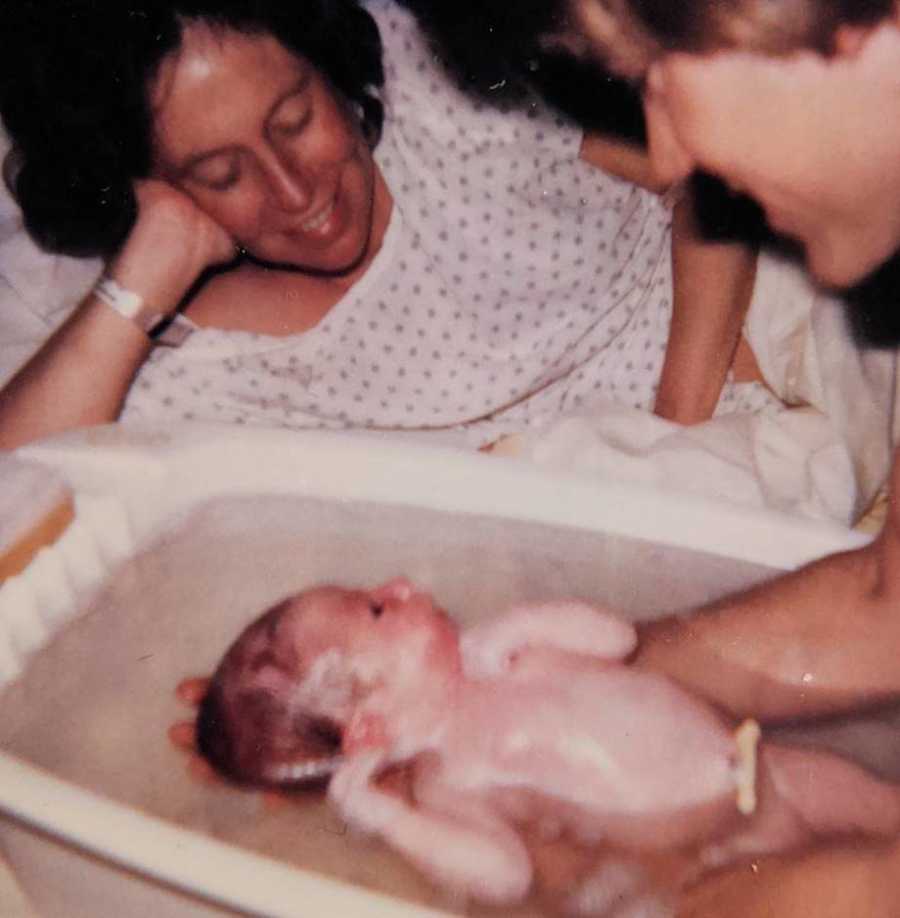
My name is Elizabeth Dishman. I’m 36 years old and I have a port-wine stain (PWS) birthmark on my face, neck, chest, and right arm. When I was born in 1984, the only lasers available to treat port-wine stains had a significant risk of scarring, so my parents opted not to have mine treated initially. When I was about 4 years old, my pediatrician happened to see an article in a medical journal about a physician in Boston who was treating PWSs with a new laser that did not cause scarring, a pulsed dye (or VBeam) laser. She tore the article out of the magazine and mailed it to my mom. (Ah, the days before the internet and cell phones!) We lived in Barrington, Rhode Island, so this was amazing–treatment just a one hour train ride away! This is actually the first time I remember being aware of my birthmark as something ‘wrong’ with me. My mom had always just taught me about it the same way you teach children about body parts: ‘Where’s your head? Where’s your nose? Where’s your birthmark?’
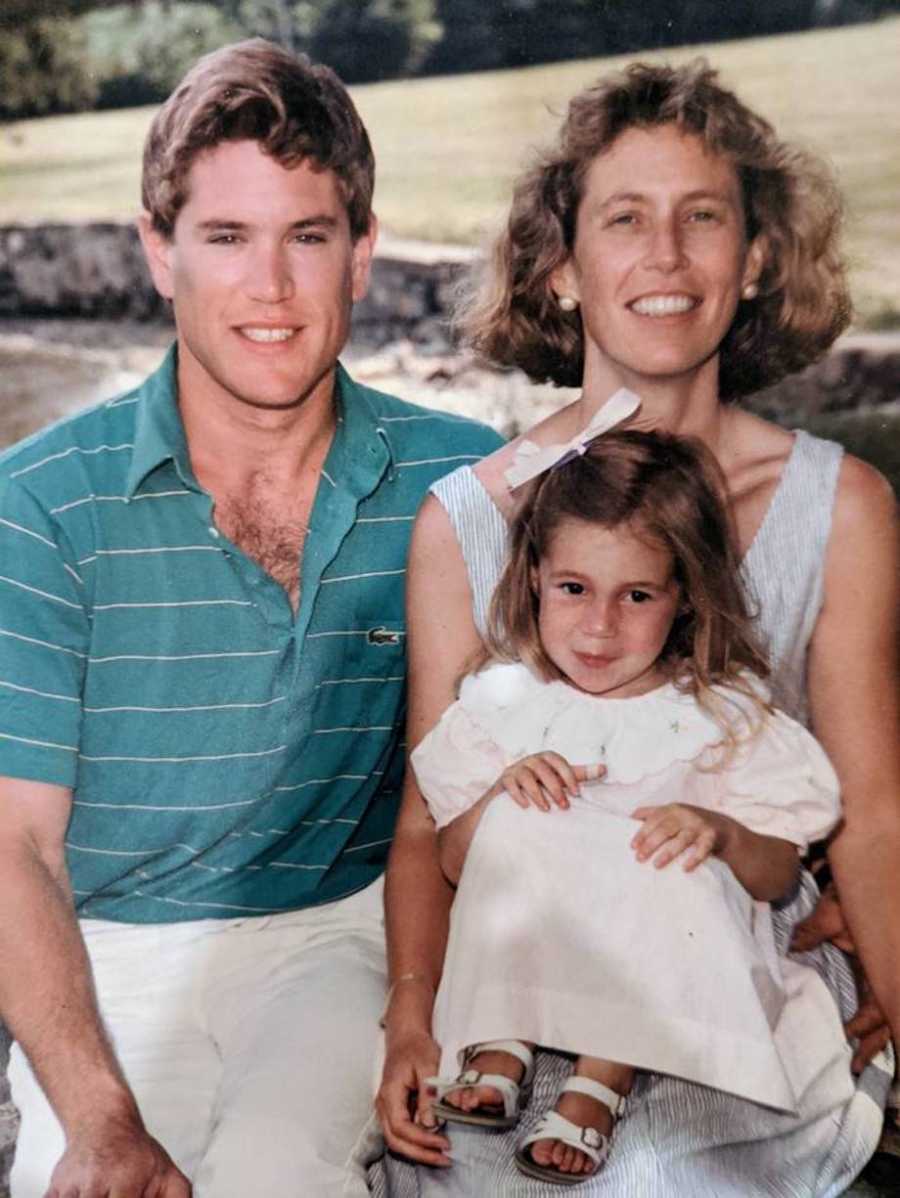
I do not remember my mom explaining the treatment to me, but I know she must have because I remember telling my friend, Bethany, ‘They’re going to take my birthmark off, and I will have bruises and band-aids on my face!’ Bethany replied, ‘Okay, well if you’re nice to me, I won’t make fun of you while you have band-aids on your face.’ That seemed fine to me at the time. I’d have this treatment and then my birthmark would be gone. No big deal.
Cut to me at 4 and a half years old, sitting in a chair similar to those at a dentist office, my hands tucked under my thighs, fingertips gripping the vinyl, and peering through the small dark holes of the protective goggles, while ‘The Little Mermaid’ played on a TV in front of me. A doctor fired a laser, pulse after pulse into my face. It took about 150 to 200 pulses to treat my whole face. Each one felt like a large, hot needle being inserted into my skin. Doctors often describe the feeling of this laser as a ‘hot rubber band snap.’ I suppose that’s the best analogy because honestly, it doesn’t feel like anything else I’ve experienced. If you have had laser hair removal, it’s similar to that, except it was being done all over my face… at age 4.
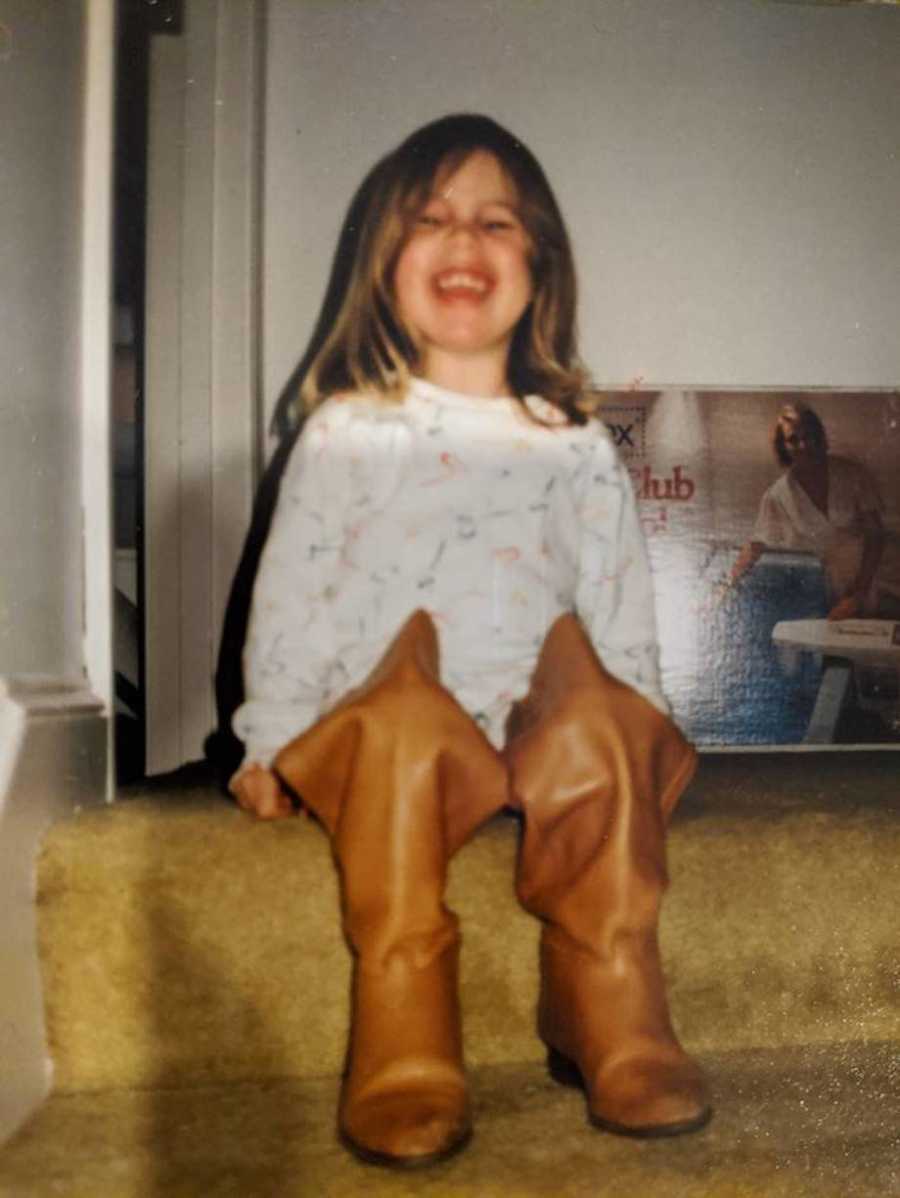
And I didn’t just have one treatment. I’ve had probably 40 or 50 treatments throughout my life. My birthmark has lightened, but it will never be gone. The various vivid memory snippets I have from my treatments as a child still make my toes curl and heartbeat quicken.
As we would ride up on the train to Boston and walk toward the brownstone where the doctor’s office was, the fear began to make my body cold. I would feel my anxiety bubbling up, making it harder to breathe. I wanted to pull away from my mom or just stop walking. Stop getting closer.
Once I was in the chair or on the table, I remember screaming out in pain while trying to keep my body still. (I knew not to move because it may cause the doctor to fire the laser and hit something else, like my eye.) I remember the doctor telling me it was almost over, and she would give me one M&M for each laser pulse. I remember when I finally lost the ability to care if I moved during the treatment. I tried to get up and run out of the room. That’s when my mom had to start holding me down during treatments.
I tried relaxation tapes to take my focus off the pain. I still abhor the sound of waves crashing on the beach as seagulls call to one another. The doctor used a topical numbing cream, Lidocaine 8 percent, to help with the pain and a Valium pill to keep me calm. I still tried to run. Only this time I ran into a wall, instead of out the exam room door, because the Valium made me dizzy. None of it helped stop the searing pain of laser pulses, especially around my nose. It felt as though the hot needles were being inserted directly into my brain.
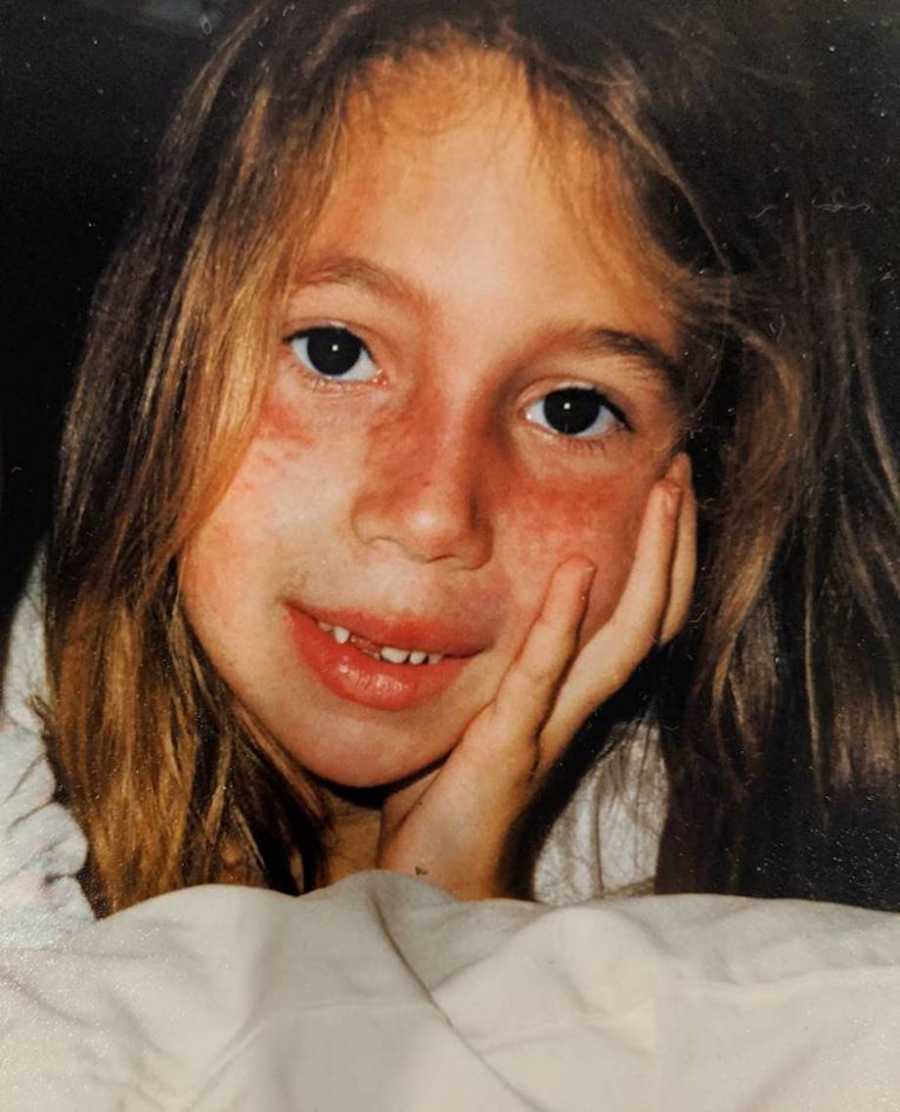
Despite continued progress with lightening my birthmark, my mom and I eventually couldn’t do it anymore. She could not comfortably tell me she thought I should keep going to get treatments and then watch me writhe in pain as she held me still. Now as a mom myself, holding my kids for twenty seconds of vaccines is terrible enough. I can’t imagine having to hold them still for 10 straight minutes while they screamed and cried in pain.
When I was about 8 years old, my mom’s fiance told her about another Boston physician he had heard about who was doing VBeam laser for patients under general anesthesia (GA). This. Was. Amazing. I met with Dr. Grevelink, who felt – given the size of my birthmark and the previous trauma I had experienced surrounding treatment – I was a good candidate for VBeam under GA. I was finally able to have laser treatments with no pain. I so wish I could have done the treatments under GA when I was younger. Meeting Dr. Grevelink was a game-changer for me, in more ways than one.
When I was working out my career path as a 20 something-year-old, I shadowed Dr. Grevelink and ended up working for him as a medical assistant at his dermatology practice for a few years. His compassion as a care provider and his dedication and enthusiasm as a teacher have always inspired me. In 2013, I got my license as a registered nurse, and I now work in a general and cosmetic dermatology practice.
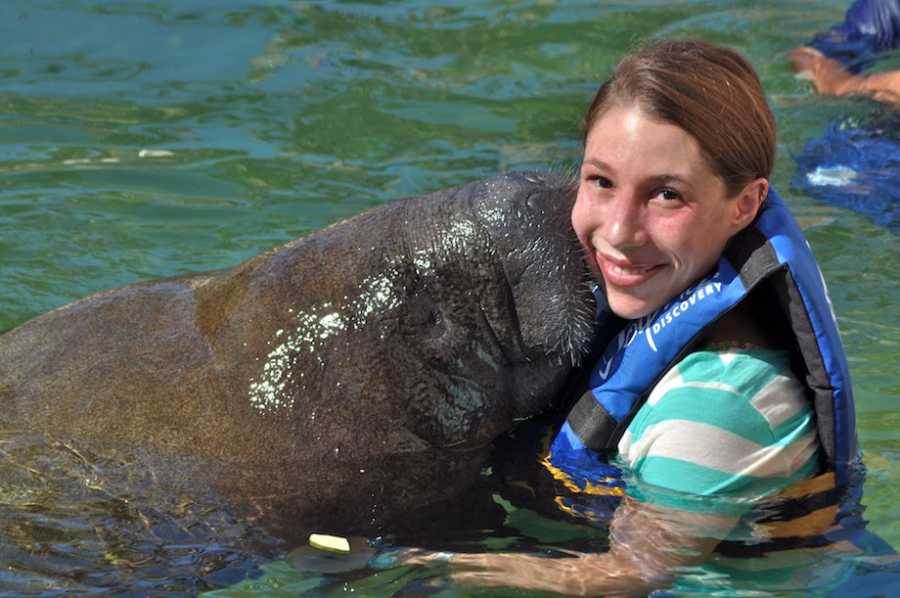
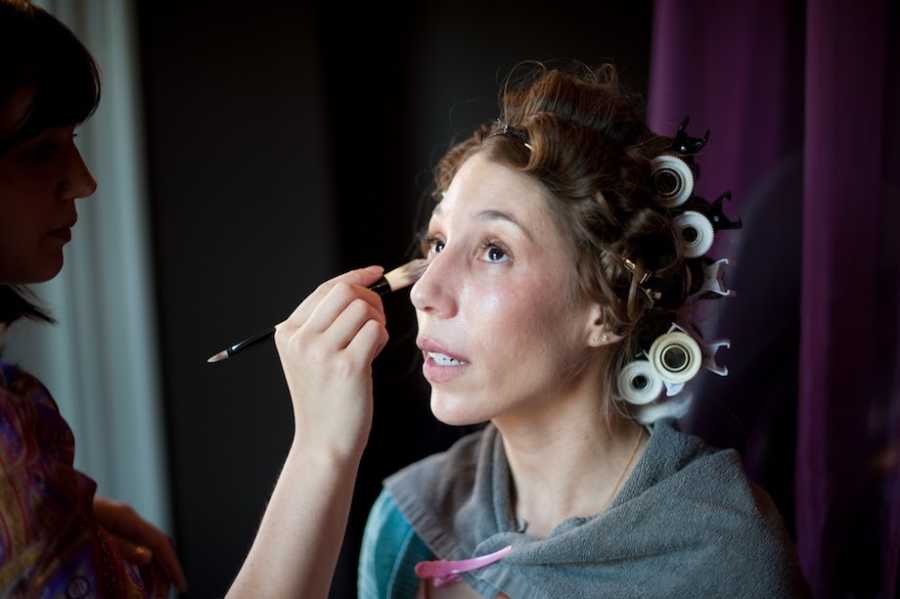
It was only in the last three years I became aware infants and children with port-wine stains are still treated without any pain control. ‘They just swaddle them and do the treatment really fast,’ I was told. My heart broke. Babies? Little babies, a month or two old? How could anyone do this? I started joining online support communities for people PWSs and parents of children with PWSs. I read the posts and comments. It was true.
Parents posted to the groups, asking the best way to manage their baby’s pain during treatment. Other parents responded with suggestions like: Don’t feed them before treatment and then nurse or give them a bottle right after. Don’t worry, the doctor says it’s really not that painful. They’re just crying because they’re being held down. They’re too young to remember and the treatments are so quick. I asked the doctor to do a pulse on me, and it doesn’t really hurt. (That last one gets me because the doctor should be explaining to parents the laser pulse will not feel the same when they’re not treating a PWS, where settings are used to destroy large vessels concentrated together deep in the skin.)
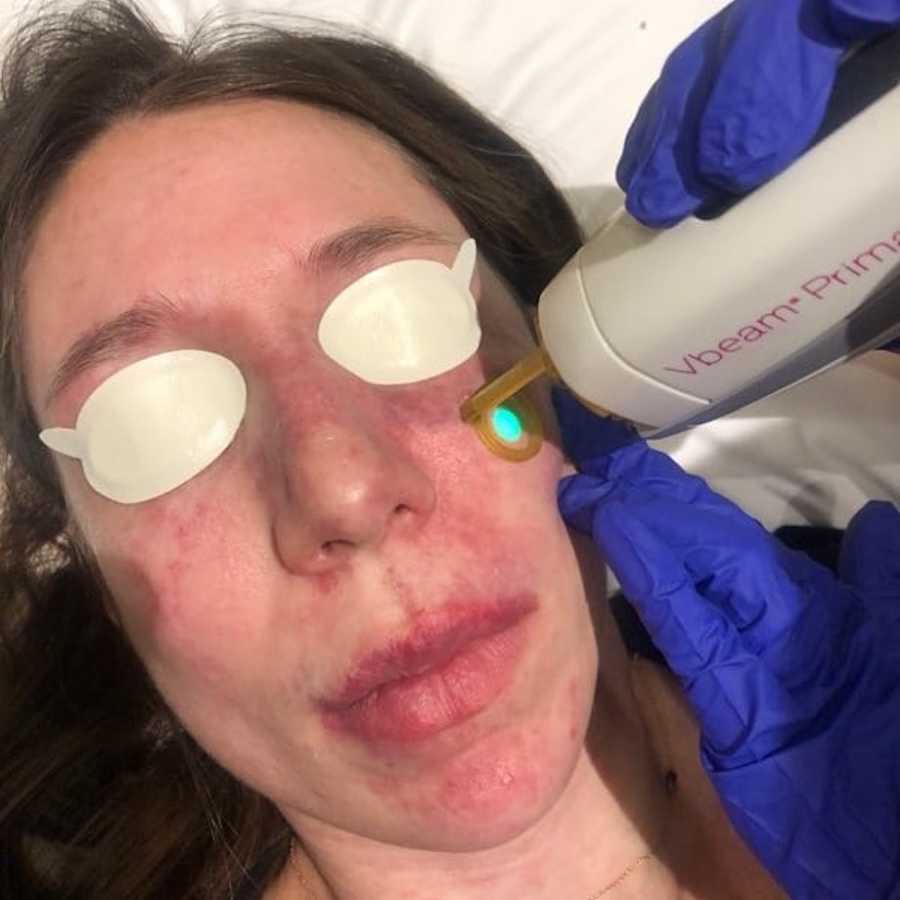
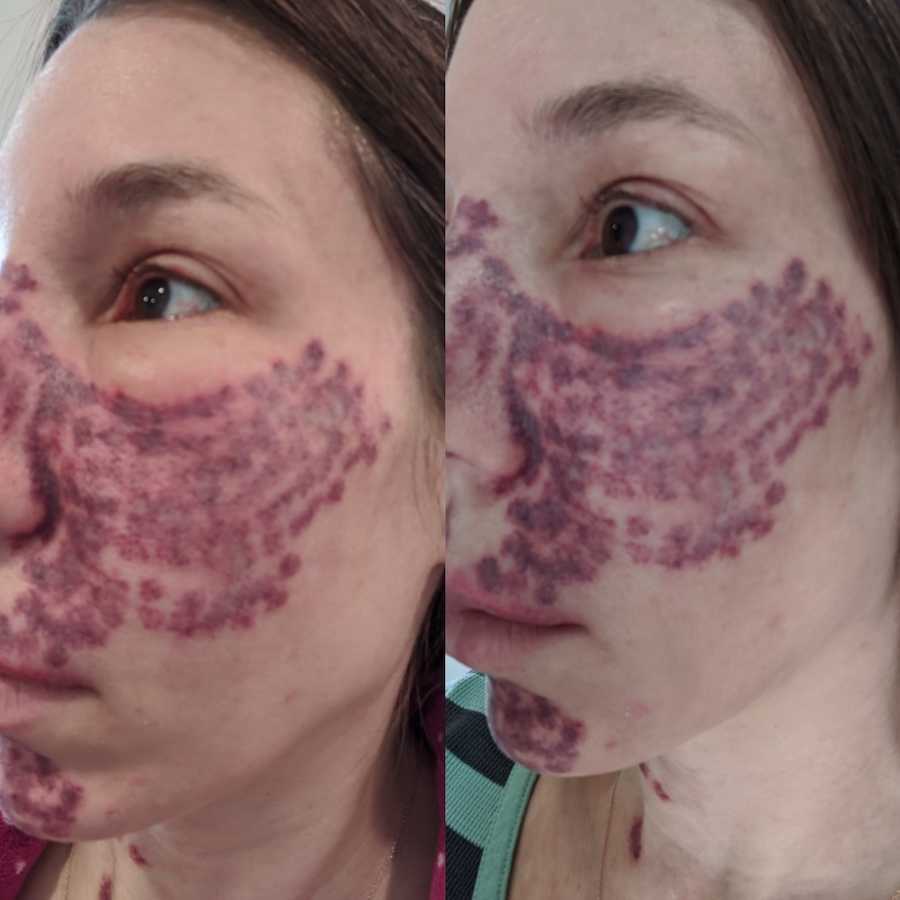
Reading these discussions made me want to vomit. The memories of the pain and being held down is so visceral for me.
Of course, I must stress a couple of things. One, I am glad I got my PWS treated. People rarely even notice my birthmark at this point in my life, it’s so very light pink. I am not upset with my parents. Not even for holding me down. They were doing their best for me. Two, I am not angry with parents or doctors who continue to choose to treat infants and children without pain control. They are doing their best.

Did you know that even into the mid-1980s, physicians thought babies could not feel pain, and even performed open-heart surgery on infants without any anesthesia? We know better now. But infants certainly cannot tell us in words what they feel or think. Even when they are older and able to communicate, memories of their experiences as infants cannot usually be put into words. But I’m telling you, laser hurts. And the experience of having your parents, the people who are your whole world when you’re a baby, hold you down during multiple painful procedures is not insignificant.
I know I’m not the only PWS patient to be deeply affected by the pain of treatment as a child. The singer/songwriter, Ed Sheeran, attributes his childhood stutter to going through laser without anesthetic for his PWS as a child. Although it is not common for speech difficulties to result after psychological trauma, it can happen.
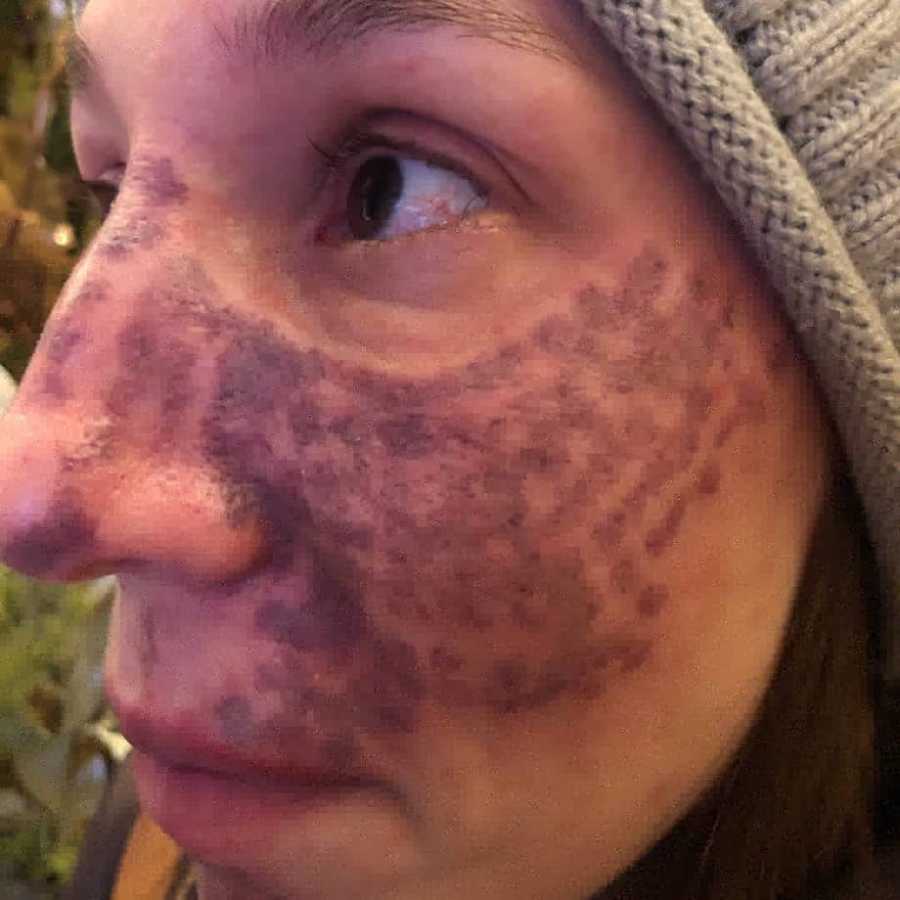
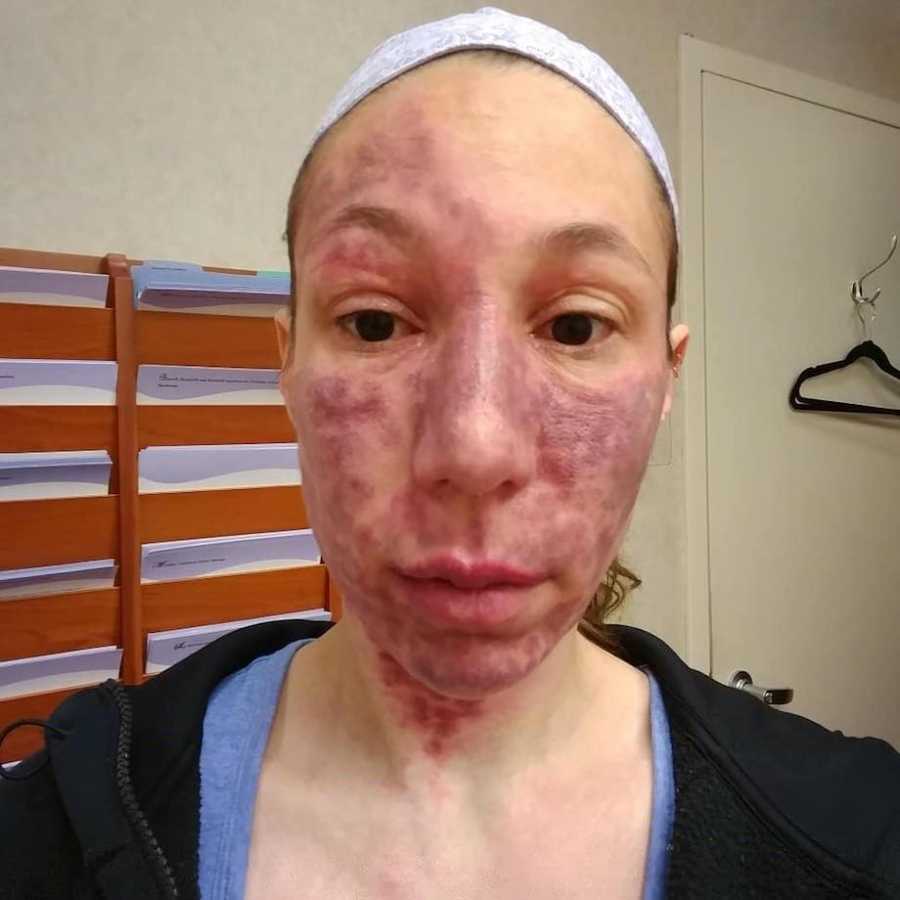
Now that I’m an adult, I can put on a layer of 23 percent Lidocaine/7 percent Tetracaine topical numbing cream an hour before a laser procedure and be totally comfortable during the treatment. This topical cream is not safe for young children and infants because we do not know how much of these anesthetics are being absorbed into their system and they can be toxic in large enough doses. Similarly, there have been studies that suggest that exposure to GA can be neurologically damaging for infants and young children. The options for parents of children with PWSs are not great.
But I wouldn’t ask an adult, or a child, to go through a dental procedure without numbing. You could and some adults do, but if it’s lengthy and becomes complicated, it’s awful. And for a child who doesn’t understand what’s happening, it’s torture.
There have been improvements made to the VBeam since I was little. There’s now a cooling spray that comes right after the laser pulse. I’ve tried a treatment with the newest VBeam (the Prima) with no pain control, just to see how it felt. My review: much improved, still hurts like hell.
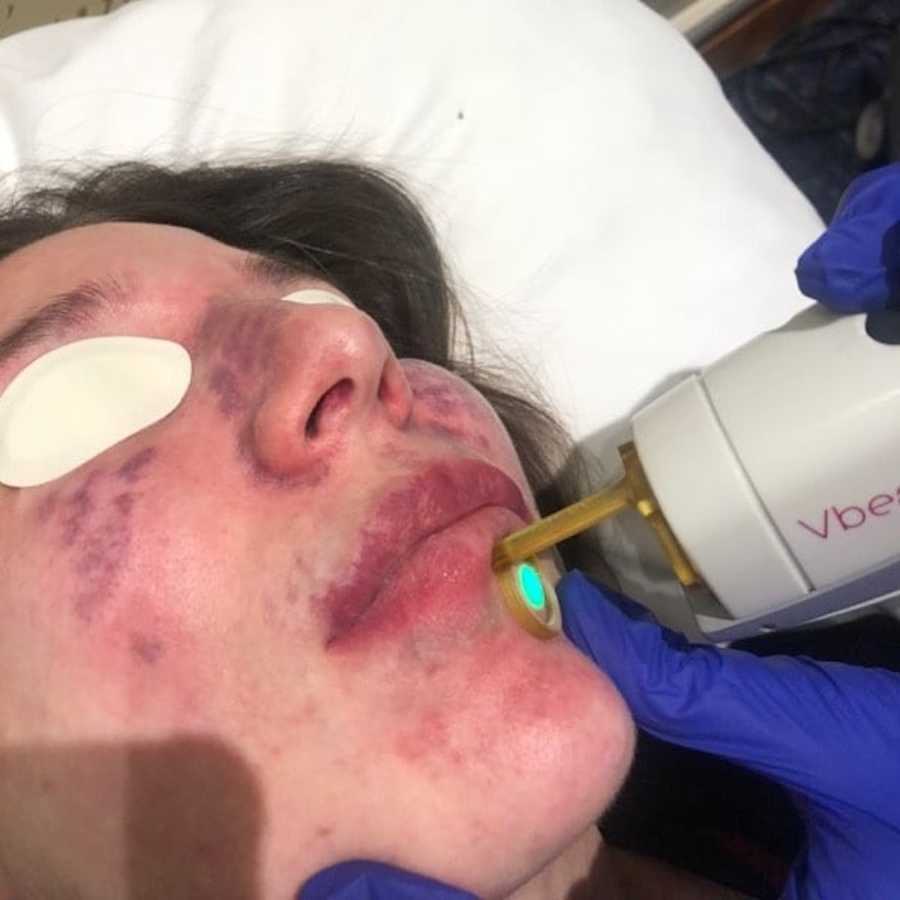
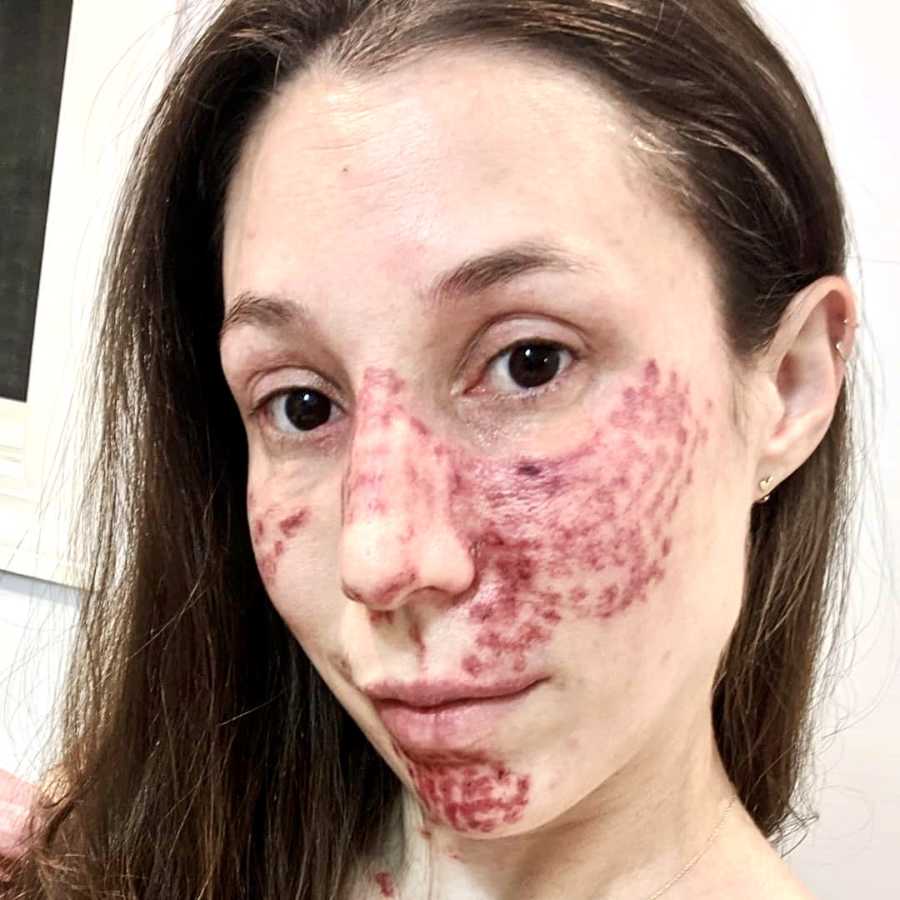
I have seen a few parents post about their laser surgeon using ‘light sedation’ or ‘conscious sedation,’ such as laughing gas, where the patient is able to breathe on their own but not aware of the procedure being done. There are alternatives out there.
To the parents and doctors of children with port wine stains, I am your kid or patient in 36 years. My story is not meant to make you feel badly for treating children without pain control. I hope my story just sheds some light on a perspective you can’t fully understand unless you’ve had the experience. Please don’t say laser doesn’t hurt. Please don’t say they’re only crying because they’re being held down. Please don’t say they won’t remember. If my parents denied my pain and dismissed my fear, I would be crushed. Your kids are going to grow up and they are going to have things to tell you. Until then, you are their voice, their advocate, and their comfort.
My wish, my hope, my want is for us to improve treatment for our littlest PWS people. How can we do better?”
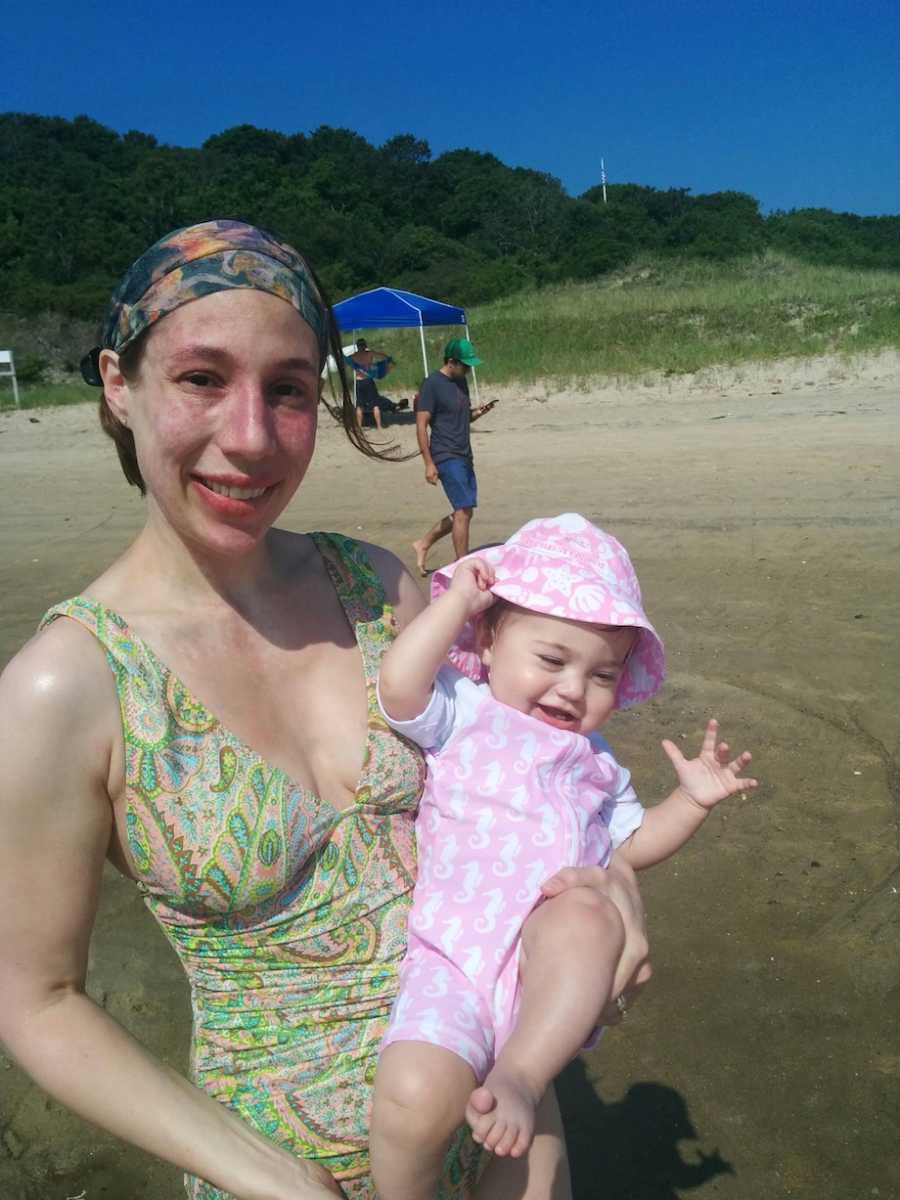
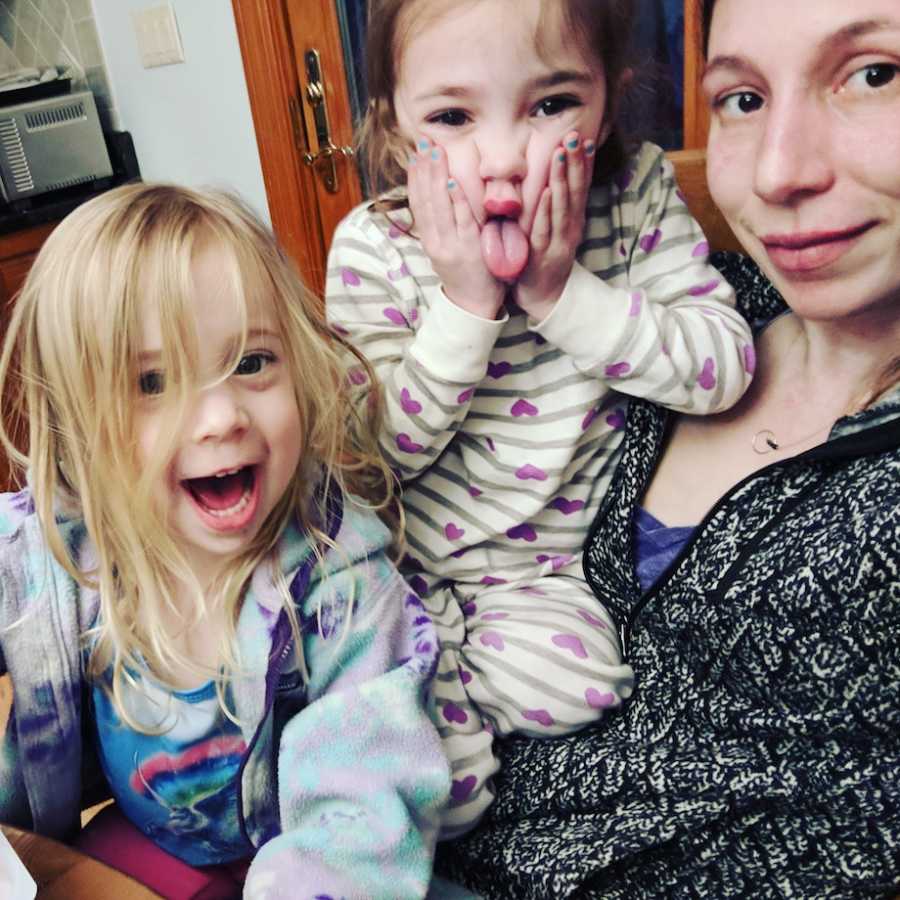
This story was submitted to Love What Matters by Elizabeth Pride Dishman from Arlington, MA. You can follow their journey on Instagram. Do you have a similar experience? We’d like to hear your important journey. Submit your own story here. Be sure to subscribe to our free email newsletter for our best stories, and YouTube for our best videos.
Read more powerful stories like this:
Spread strength and encouragement for others. SHARE this story on Facebook with family and friends.

